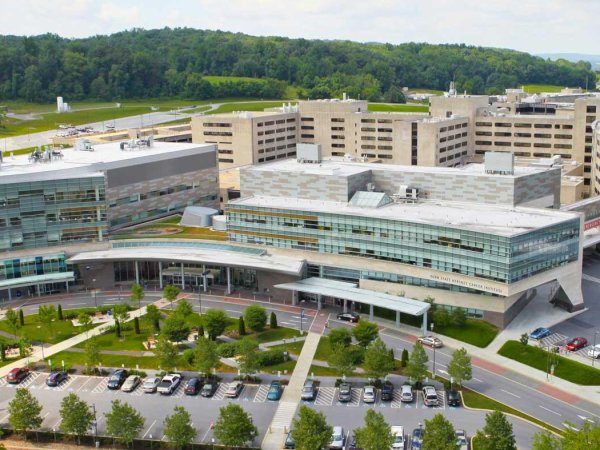
The goal of this project is to develop a cost-effective, point-of-entry, pretreatment system to remove as many emerging contaminants as possible from hospital wastewaters before they enter the regional sewer system. So-called emerging contaminants in sewage include antibiotics, antimicrobial disinfectants, nonprescription drugs, pharmaceuticals, and steroids. These contaminants are not effectively removed by conventional wastewater treatment plants (WWTPs) and are starting to appear in source waters for drinking water treatment plants. Hospitals contribute a disproportionately large amount of the load (defined as mass/time) of emerging contaminants entering WWTPs. Contaminant concentrations in hospital wastewaters are up to 150-times higher than corresponding contaminant concentrations in regional wastewaters. One difficulty in removing emerging contaminants from wastewater is due to their low concentrations (ng/L to μg/L). However, it is important to note that due to high biological potency, even low concentrations of certain emerging contaminants can have a large impact on human and environmental health. Pretreatment of hospital wastewaters could significantly decrease emerging contaminant loads entering WWTPs and plausibly decrease the frequency of these contaminants entering drinking water sources.
The objective of this project is to collect proof-of-concept data to determine if a biofilter of manganese oxide-encrusted coir fiber can remove emerging contaminants from hospital wastewater. Biogenic manganese oxides (MnOx) are formed by the oxidation of dissolved Mn(II) by bacteria and fungi. This process is used for the remediation of acid mine drainage (AMD) and can be accelerated if the microbes are attached to a substrate such as coir fiber. MnOx rank among the strongest natural oxidants in soil and are highly reactive towards emerging contaminants. Biogenic MnOx can oxidize analgesics, antibiotics, antimicrobial disinfectants, anti-inflammatories, and hormones. Biogenic MnOx oxidize the emerging contaminants while Mn(II)-oxidizing microbes catalytically regenerate the MnOx. Biogenic MnOx are produced in great abundance as a waste product of AMD treatment. We propose to use these biogenic MnOx for wastewater treatment – an innovative, sustainable alternative to disposal as a solid waste. A biofilter of MnOx-encrusted coir fiber will be provided by a small AMD treatment company (EcoIslands LLC, Altoona PA) and used to treat hospital wastewater collected from the Milton S. Hershey Medical Center. If the proposed proof-of-concept experiments are successful, then research proposals will be prepared for submission to the National Science Foundation, US Department of Agriculture, or National Institutes of Health.
Resulting Publications
- Castillo Meza, L.*, Piotrowski, P.*, Farnan, J.*, Tasker, T.L.*, Xiong, B.*, Weggler, B., Murrell, K.*, Dorman, F.L., Vanden Heuvel, J.P., and Burgos, W.D. Detection and removal of biologically active organic micropollutants from hospital wastewater. Science of The Total Environment, Volume 700, 15 January 2020, 134469.
Resulting Presentations
- Castillo, L., and W.D. Burgos. Biogenic manganese oxides from AMD treatment system remove contaminants of emerging concern (CECs) from hospital wastewater. 255th American Chemical Society National Meeting, New Orleans, LA. March 21, 2018. (student presenter)






